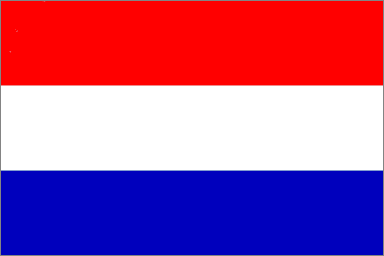![[Croatian Bannate]](../images/h/hr-1939.gif)
Janko Ehrlich - Zdvorak, 29 Sugust 2001

Last modified: 2001-09-08 by dov gutterman
Keywords: former yugoslavia | yugoslavia | croatia | croatian bannate | banovina hrvatska | tricolour | checquy | bosnia and herzegovina | europe | balkans |
Links: FOTW homepage |
search |
disclaimer and copyright |
write us |
mirrors
![[Croatian Bannate]](../images/h/hr-1939.gif)
Janko Ehrlich - Zdvorak, 29 Sugust 2001
See also:
Banovina Hrvatska was created in 1939 by the agreement
Cvetkovic-Macek (Cvetkovic being prime-minister of Yugoslavia,
and Macek leader of HSS, Croatian peasants' party supported by
more than 90% of the votes from Croatians at the time). The
agreement was in making a national region in Yugoslavia for
Croatians, with intention to solve the "Croatian
question" in Yugoslavia. Banovina (Banate) was the
name of administrative divisions of Yugoslavia between the two
world wars. Until 1939 there were several (7, if I recall
correctly) banovinas all having borders that were not
equal to national borders (with intention of unifying peoples
into Yugoslavs). In 1939 the agreement was made to make one banovina
for Croatians, that included two of former banovinas
(Primorska - roughly Dalmatia, and Savska - roughly Central
Croatia and Slavonia) and some regions that were taken from other
banovinas. The new Banovina Hrvatska included what
is now Croatia (excluding Istria, Rijeka and Zadar, of course)
and the area between rivers Sava and Drava (Drau) called Eastern
Srijem reaching the town of Zemun (that is today a suburb of
Belgrade), and the area south of Dubrovnik - the Bay of Kotor
(Cataro) and further south til Ulcinj. Also a wide area of what
is now Bosnia and Herzegovina was included, mainly the western
Herzegovina, roughly what is today the Federation of Bosnia and
Herzegovina. All except the last is what was the Triune Kingdom
of Dalmatia, Croatia and Slavonia when it joined Yugoslavia.
Since 1918 the national flags were banned, alowing only the flag
of Yugoslavia to be displayed (and, by the way, the Serbian
tricolour was proclaimed the flag of the church, and was
displayed so). In 1939, following the agreement and formation of Banovina
Hrvatska, the Croatian tricolour was reestablished.
![[The Croatian Tricolour]](../images/h/hr-1918.gif)
The Croatian Tricolour
by Zeljko Heimer
The flag used in Banovina Hrvatska was the Croatian
tricolour. The flags for official use had the coat of arms in the
middle (the chequy shield), and that was the arms of Banovina
(I mean the simple chequy shield). The flag used by the civil
population was either simple tricolour, but much frequently the
flag with the three arms. I don't have many references to this
(of course, I have references for the history, but in Croatian).
In Flagmaster 068 there is a short paragraph on this period:
"... from 1848 onwards the tricolour of red, white and
blue ... and often including the shield of 'Greater Croatia',
became popular, and was in use until 5 January 1929, when the
regional flags were prohibited by the Belgrade government. They
were permited once more in 1939."
I beleive that the 'regional flags' were prohibited much earlier
than 5 January, but this would be the latest date, since on 6
January the king Alexander I proclaimed a dictatorship and banned
all political parties and 'regional feelings'.
"Flags trough the Centuries" (exibition catalogue) is
also quite short of the period:
"After the fall of the Habsburg monarchy Croatia became
part of the unitary Kingdom of SCS (1918) - and lost right to use
the Croatian tricolour as a state flag. In spite of this the
Croatian tricolour lived on in the flags of political and town
societies which unremittingly worked for a solution of the
Croatian problem within the monarchy of Yugoslavia. In 1941 ...
"
Zeljko Heimer, 7 Novemeber 1996
After the People's Committee (Narodno vijeće) declared that
State of Slovenes, Croats and Serbs is joining the Kingdom of
Serbia November 27, 1918 and when it was realised on December 1,
1918, Croatian national symbols were just tolerated. They were at
that time seen as symbols of Croatian nation, not as of any
statehood. That is why Slavonian and Dalmatian arms were not
represented anywhere.
According to the Constitution of Kingdom of Serbs, Croats and
Slovenes, adopted July 28, 1921, coat-of-arms of Croats was
described as shield of 5 x 5 square fields of red and white
colours and it was placed in the newly formed country's
coat-of-arms, together with Serb and (kind of) Slovene
coat-of-arms.
Later, when king Alexander proclaimed dictatorship and Yugoslavia
on January 6, 1929, all national symbols were banned and Croats,
Slovenes and Serbs were described just as three branches of one
newly proclaimed Yugoslav nation.
After the assassination of king Alexander in Marseille October 9,
1934, circumstances gradually lead towards the Agreement between
Maček (pron. Machek) (leader of in that time strongest Croat
party - Croatian Peasants' Party (HSS) and Cvetković (pron.
Tswetkovich) (Yugoslav prime minister)) in August 26, 1939. It
brought to Croats creation of Bannate of Croatia (Banovina
Hrvatska) with wide autonomy. From this time, until April 10,
1941, Bannate of Croatia adopted its flag and coat-of-arms.

by Janko Ehrlich - Zdvorak, 29 Sugust 2001
Flag was simple tricolour red-white-blue
1939.gif)
by Janko Ehrlich - Zdvorak, 29 Sugust 2001
Arms were shield of chequered pattern with twenty-five
alternating red and silver fields. The same coat-of-arms was
again official from June 25, 1990 to December 22 1990.
Exact ratio of that flag is probably equal as at that time of
Yugoslav flag, so it was 2:3, although it was seen in many
variations.
Janko Ehrlich - Zdvorak, 29 Sugust 2001
|